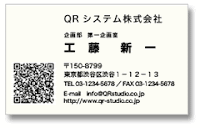2010年3月28日星期日
Tech bolg10:Cloud computing
Tech blog9: Flexible display
‘Impress’ is a flexible display created by German designer that enables touch interactivity with feedback. User touches down on the foam and triggers the sensors which in turn communicate with an overhead projector.

Tech blog 8: PCubee
2010年3月27日星期六
Tech blog 7: Visual Search

Tech blog 6:Sixth Sense technology
Sixth Senses technology:
Wearable gestural interface
Sixth Senses is a mini-projector help people get easy access to the information surrounds them over objects' surfaces. It is composed of a camera and a cell phone, but it acts like an untouchable interface, the only thing you need to do is post a right gesture and then watch.
Get information with gesture and displayed it in the air
We are now living in a world which is full of information. Sometime you may feel that information is right there but you can not touch or get access to them. Although cell phone and Wi-Fi have brought us a lot convenience, sixth Sense makes it easier. It can recognizes the objects around you, displaying information automatically and letting you access it in any way you want. The micro-projector overlaid the information on any surface and then gets more information you need. In addition, the information is displayed in the air and manipulated using hand gestures. Just like what we have seen in the movie or cartoon.
The future
I think maybe in the coming future, Sixth Sense will get rid of the colored finger caps and it ever goes beyond the complex of cell phone and camera. Ultimately, we may get a “transparent" user interface for accessing information about everything around us. If they will that may change the way we interact with the real world and truly give everyone complete awareness of the environment around us.
Killer application
Wearable gestural interface



.jpg)











